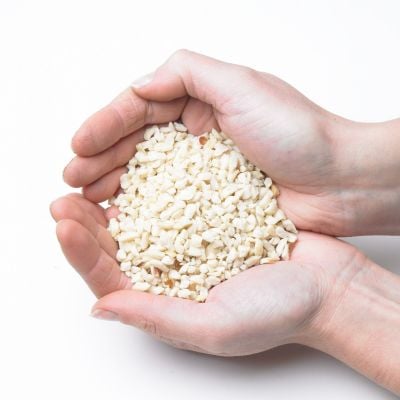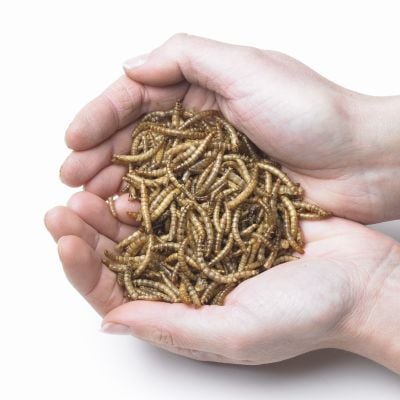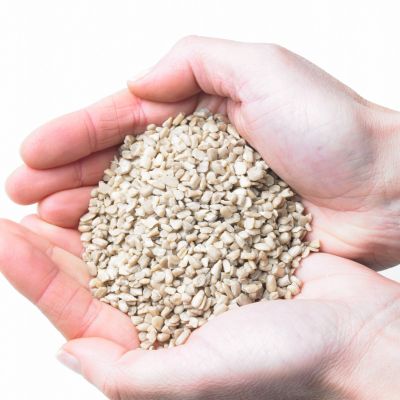Pied Wagtail Factfile
Even for people not especially interested in birds, the Pied Wagtail is often familiar to them as the species has become a common sight wandering around in supermarket and motorway service station car parks, especially in the winter months, looking for tiny bits of dropped food – although their primary food is insects. The Pied Wagtail is actually a race of the White Wagtail, with virtually all of its global population being in the UK, whereas the White Wagtail replaces it across mainland Europe. Unmistakable from any other bird, its black, white and grey plumage, plus constantly wagging long tail, make it one of the easiest of all songbirds to recognise.
Pied Wagtail nesting and breeding habits
Few birds are more versatile when it comes to nesting sites than the Pied Wagtail, and it will select locations as diverse as a gap in a dry stone wall, a ledge under a bridge, in a pile of old wooden pallets or other debris in a builders’ yard, a disused nest of another species in a hedge, an open fronted nest box tucked into a climbing wall plant, or simply on the ground in rough and open country with no other nesting options. The nest itself is a neat cup of grass, plant stems and other plant material, then lined with feathers, hair or wool. It is constructed entirely by the female bird, who also does most of the incubation. Two broods per season are usual, with a clutch of five to six eggs which hatch after about 13 days.
Pied Wagtail history and population trends
The long term trend is a slightly uncertain one, with considerable fluctuations in the UK population over the last 50 years or so. However, the species is not currently at risk and is therefore listed as green status.
Behaviour traits of Pied Wagtails
In its breeding habitat and when feeding, Pied Wagtails will typically walk through very short vegetation such as a grazed field in order to disturb insects, and then either catch them on the ground or quickly fly up to catch them as the insect tries to make a getaway. It’s been suggested that the constantly wagging tail might be a tool the birds use as they move forward to help disturb insects. A related behaviour is how the species will closely follow livestock such as cattle and also horses and ponies around a field, with the animals both attracting flying insects and disturbing them from the ground for the birds to eat. A well-known behaviour in winter months is when many hundreds of Pied Wagtails roost together in town and city centres, with buildings such as petrol stations, shopping centres and hospitals all being used, plus lines of trees in well-lit streets.
Pied Wagtail diet and food
The Pied Wagtail’s food is almost exclusively insects, with often tiny ones eaten which other ground-feeding birds may well disregard. Tiny scraps of other food will also be eaten, and this will make up at least some of what they eat in town and city locations in the winter months. In the garden, probably the best food to provide is live mealworms, though they may also eat chopped peanuts and sunflower heart chips spread on the ground.
What should I feed Pied Wagtails?
We recommend the following products to help attract Pied Wagtails to your garden.
Bird Food
Frequently Asked Questions
How common is a Pied wagtail in UK?
Pied wagtails are fairly common in the UK, with their numbers certainly being helped over time by their apparent liking for manmade habitats – both for feeding and roosting (see more details on this page under ‘Habitat’).
How rare is a Pied wagtail?
Not rare at all in the right sort of habitat, Pied wagtails can even be seen feeding in the car parks of motorway service stations and retail parks.
How do I attract Pied wagtails to my garden?
A running water feature would probably help attract Pied wagtails to a garden, as their preferred natural habitat typically includes running water. The species also likes to feed on areas of short vegetation (e.g. a lawn) but they would also use a patio. Peanut chips and sunflower heart chips scattered direct on the ground will also help attract Pied wagtails, which will readily eat both types of food in the winter months.
Do Pied wagtails eat slugs?
No, Pied wagtails do not eat slugs.
Why do wagtails wag their tail?
The reason that wagtails wag their tales is not entirely understood, and despite numerous studies. However, there is some evidence that the behaviour is associated with visually demonstrating a state of vigilance against predators, with the relevance of this being that, in particular for Pied wagtails, they feed largely in open areas with little cover.










